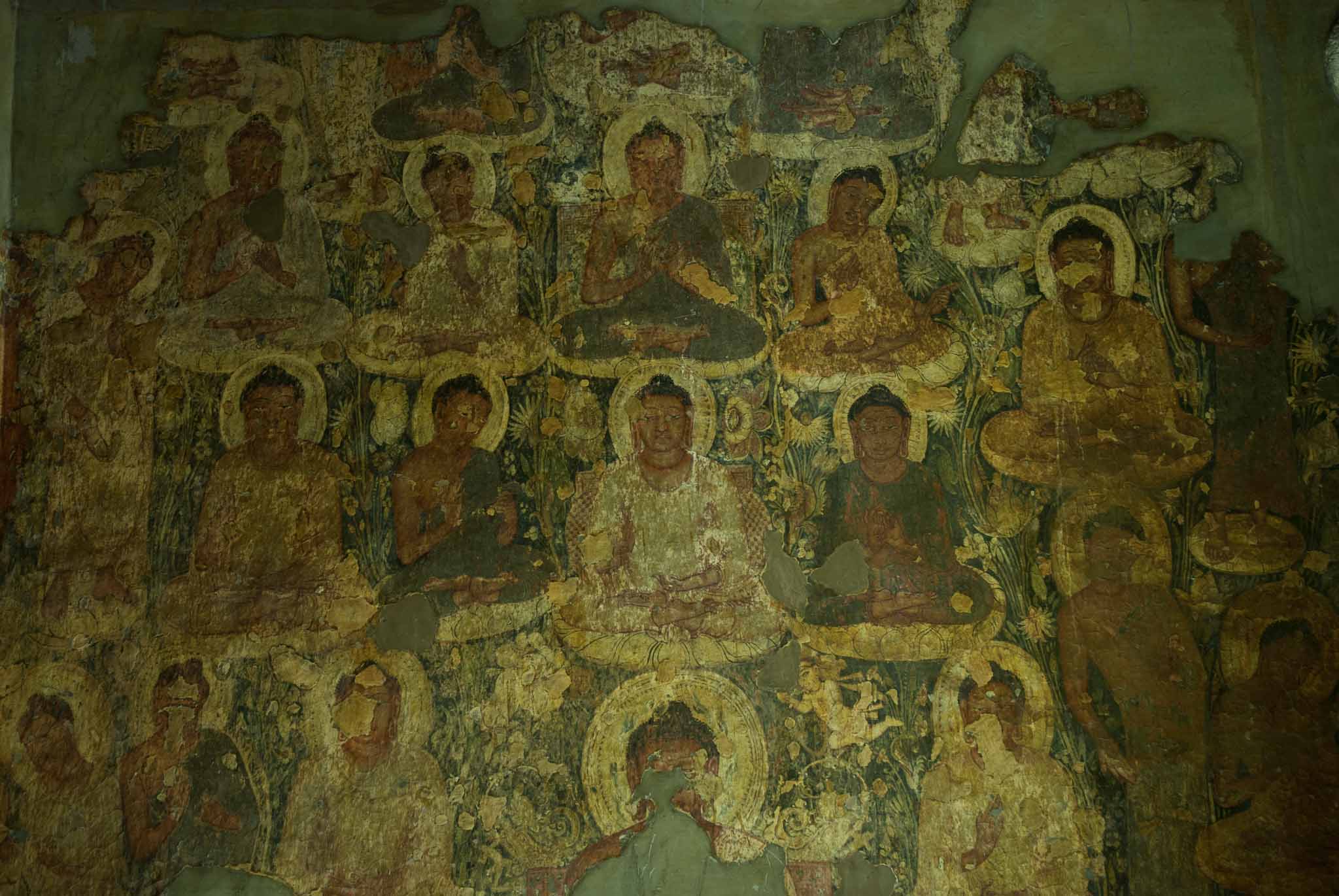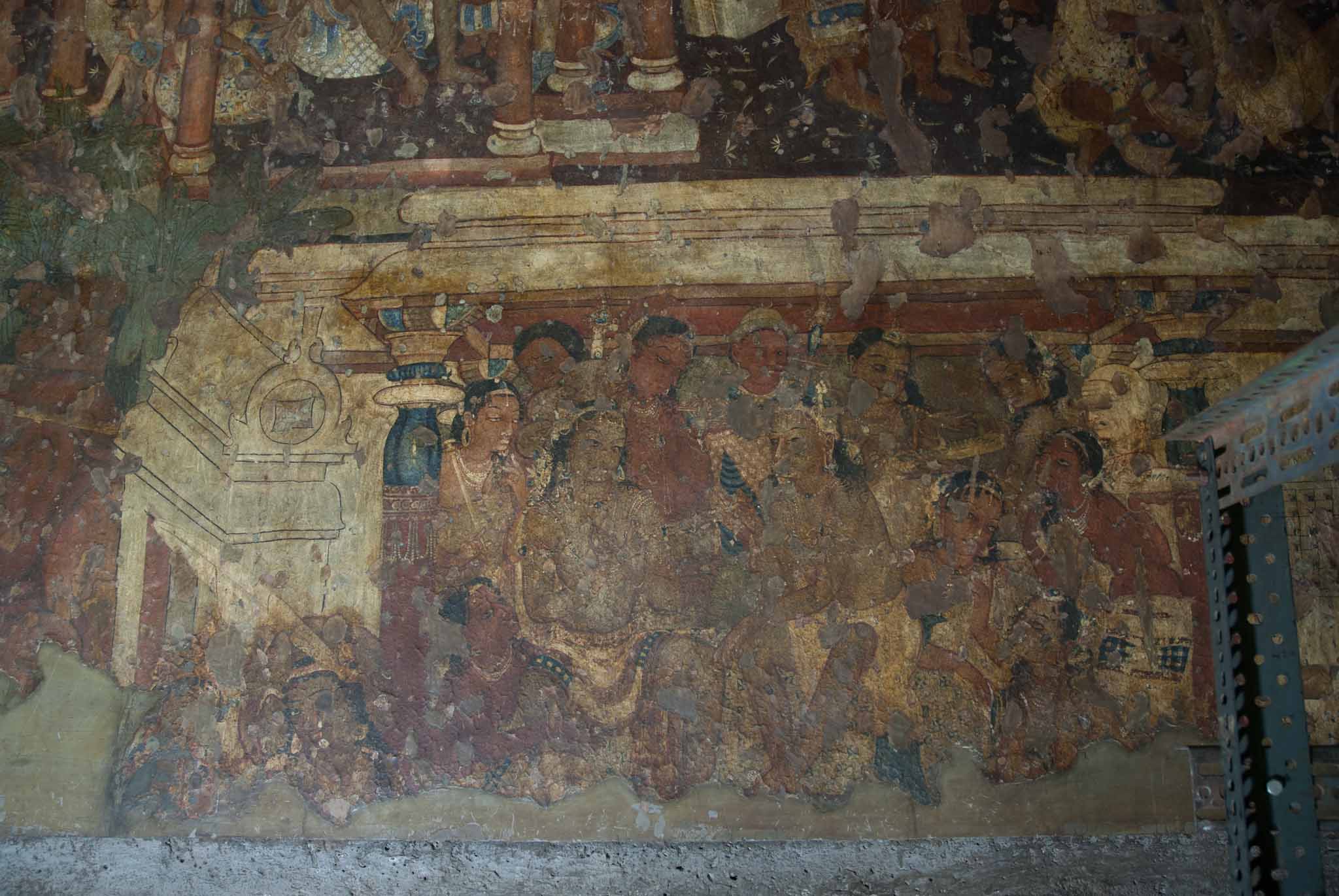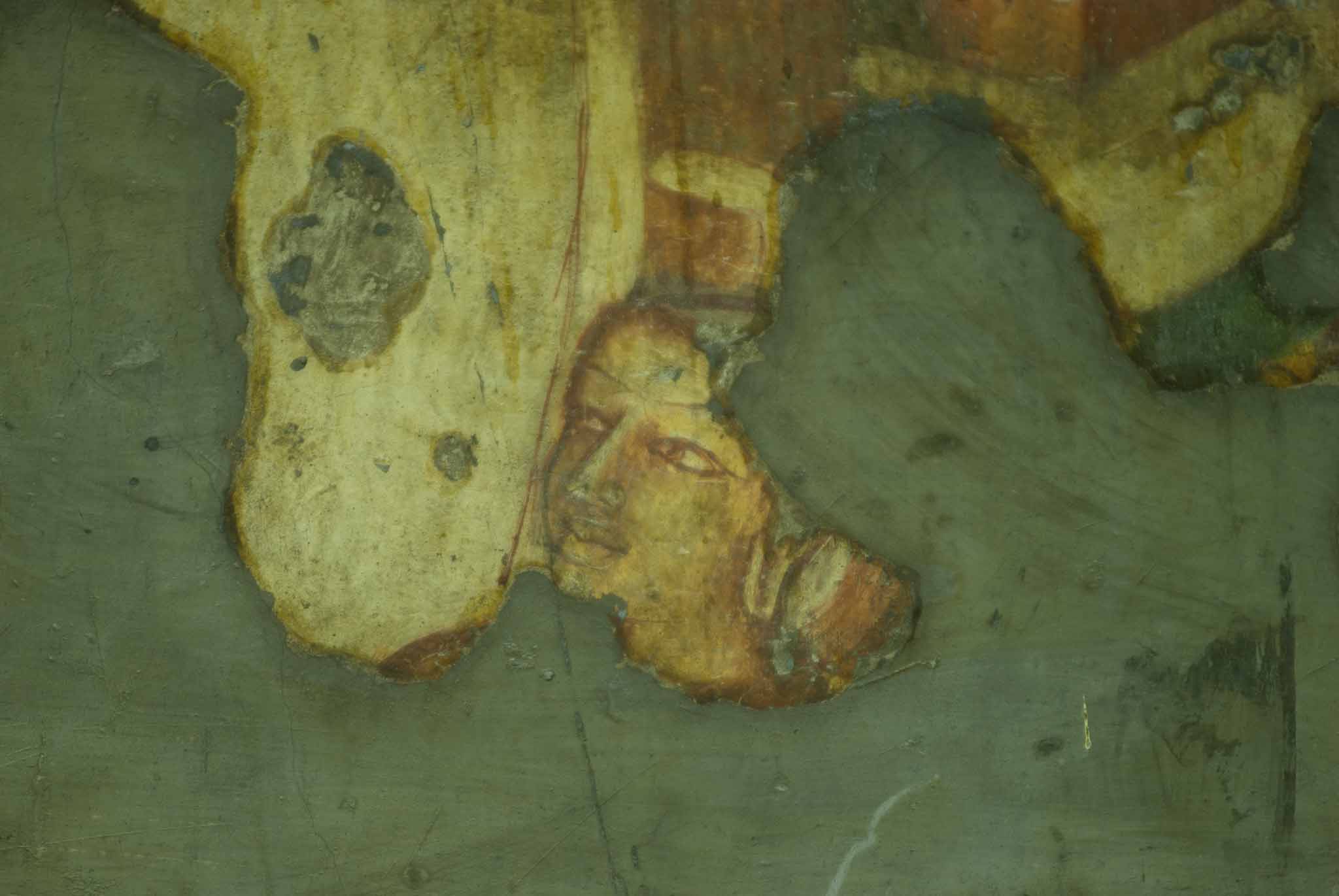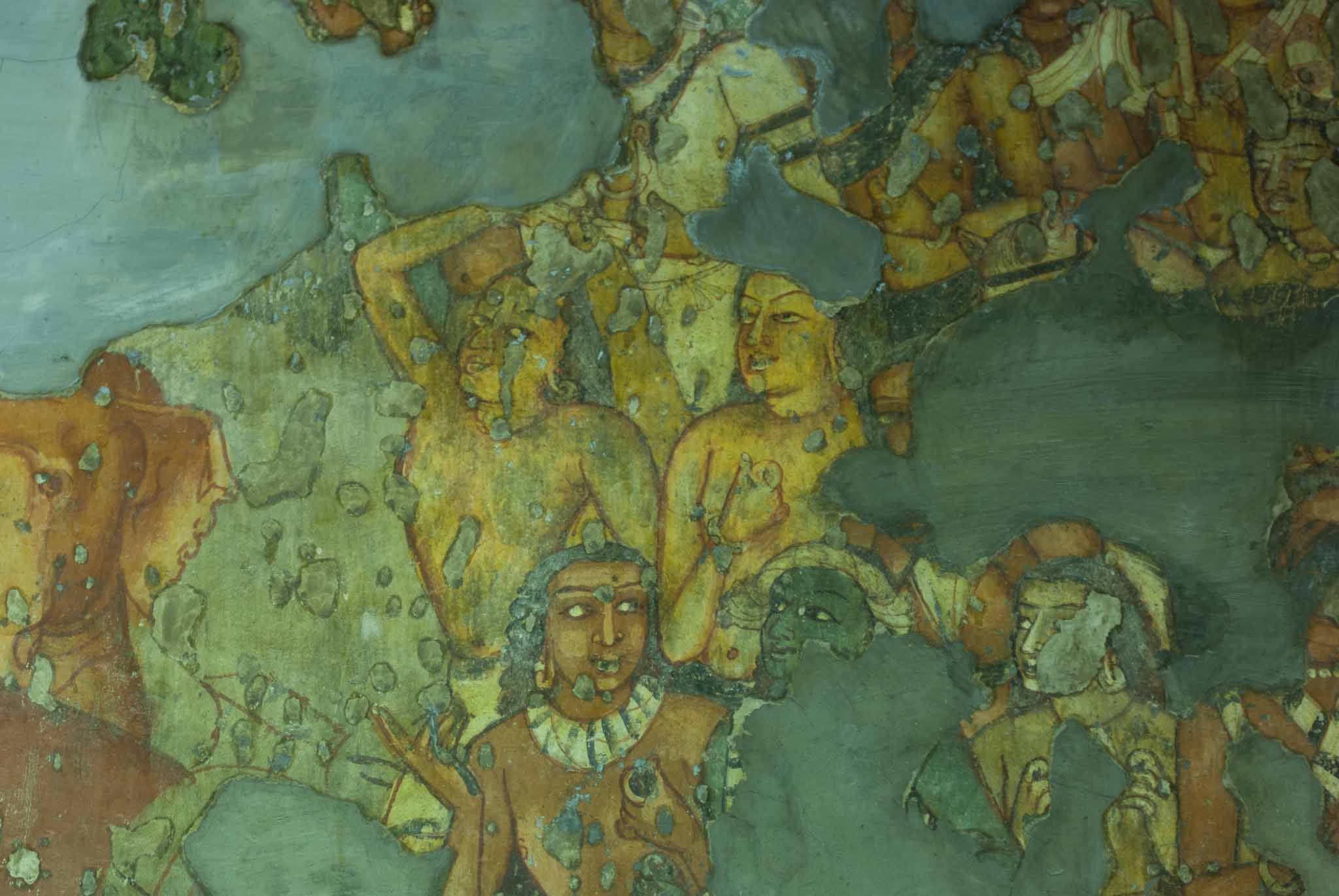Category: Ajanta Caves
-
Ajanta Cave 1: narrative paintings
1. Shrine Antechamber Mahapratiharya, right wall 2. Hall Sudhana, front-left corner Mahasudarshana, front-wall Janaka, left wall Kalyankarin, left wall Sibi Kapota, front wall Udrayana, front wall Maitribala, right wall Prabhasa, right wall Sankhapala/Janaka, left wall Champaka, rear wall Sumagadha, real wall Mahosadha, rear wall Nagakumara, right wall Related Images:
-

Ajanta Cave 17
Cave 17 is an edifice of the late fifth century CE. Its plan is similar to cave 16. It has a veranda, a hall, and similar arrangements of cells that are nineteen in number. Additionally, there is a shrine antechamber. The veranda has massive pillars with similar carvings. There are three entrances to the hall…
-

Ajanta Cave 16
Ajanta Cave 16 is most noted for its epigraphic value. It has a long incised inscription on the left wall of the facade. The damaged front wall has a single door and there is an inscription in shell characters on its Cave 16 is a Mahayana Vihara of late fifth century A.D. It has a…
-

#86. Devāvatāra
Cave No. 17 Identification: Schlingloff 2013. For the story, vide Cave 16, No. 84. —Source: Singh 2019, 31-33; Schlingloff 2013, I, 476 Related Images:
-

#88. Mahāprātihārya
Cave No. 1 Identification: Foucher (1921, narrative no. 57). The legend is from the life of the Buddha.—There were six ascetics, who misled the followers of the Buddha when he preached about the path to salvation. They wanted to challenge the Buddha’s spiritual power in a contest. They sought King Bimbisāra’s endorsement, which was not…
-

#60. Campaka
Cave No. 1 Identification: Foucher (1921, narrative no. 2).—The miffed wife of a nāga (serpent) king went to a royal court to complain that a hunter had caught her husband just so that he could put up his catch for display and earn some cheap brownie points. So far, the nāga king had been leading…
-

#76. Nāgakumāra
Cave No. 1 Identification: Schlingloff (1977b, p. 913–917)In a previous age when a Buddha named Kāśyapa was living, a nāga (serpent) prince died in the claws of a garuḍa (eagle). Before his death, he saw some monks meditating in the hills and wished to become a monk in his next life. He was reborn as…
-

#53. Prabhāsa
Cave No. 1 Identification: Schlingloff (1977c, p. 152).— King Prabhāsa caught an elephant. He trained the animal and decided to take him out for a walk one fine day. The elephant sniffed out the odour of a female elephant, it being the mating season, and was immediately aroused. In the flurry of jumbo activity that…
-

#61. Bhūridatta
Cave No. 2 Identification: Schlingloff 2013.— A nāga (serpent) king sent his representatives to propose to the daughter of the king of Banaras. But the king was not agreeable to the concept of a human-nāga union. Later, he agreed on the condition that the nāgas would not harm anybody. After marriage, the princess gave birth…
